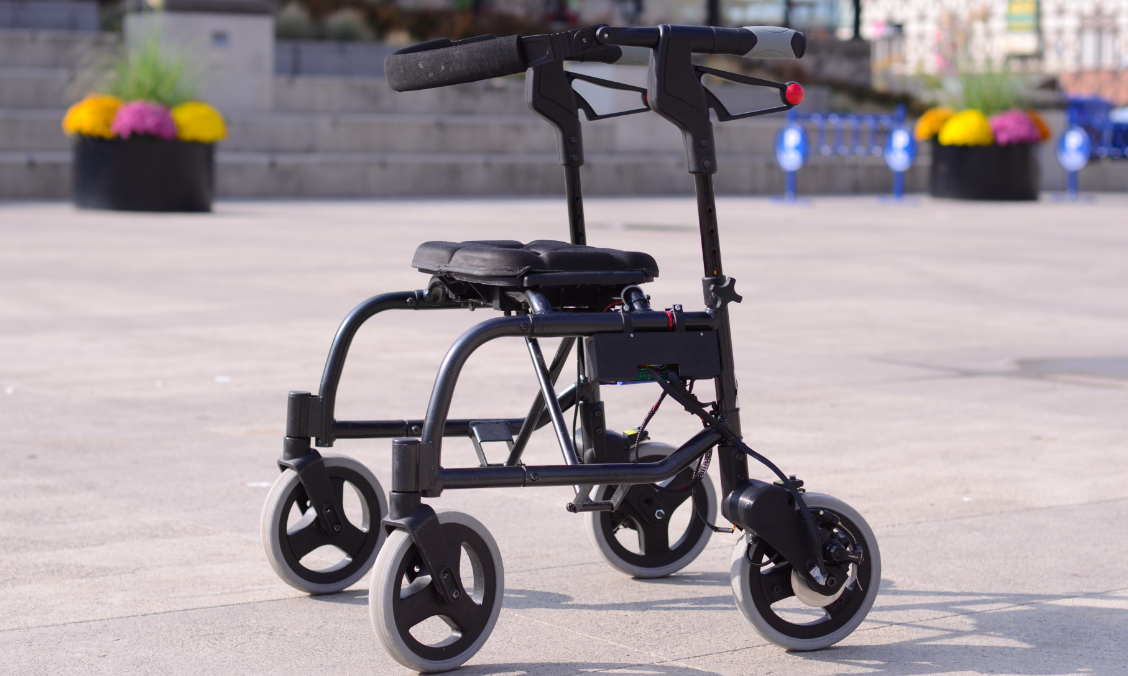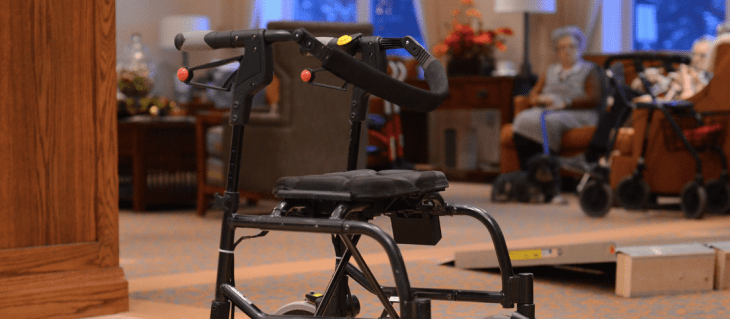Today at TechCrunch’s Hardware Battlefield at CES Sentry Scientific displayed new walker technology designed to keep the elderly safe, and mobile. This isn’t the usual fare here at TechCrunch, but it’s important to keep in mind that not all tech progress is represented by social apps or new servers.
The team at Sentry uncovered an odd truth: Seniors using walkers to remain ambulatory were being injured by unlocked brakes and steep inclines.
In short, seniors often forget to lock the brakes on their walkers, and when they would then rest upon them, off went the walker, and down goes the senior. To combat this, Sentry has created a system that auto-locks brakes on a walker when it is sat upon, and doesn’t unlock them until the person manually releases the catch.

Secondly, when heading down steep inclines with their walkers, seniors can lose control, and fall. Sentry took this in hand, and built technology to automatically apply brakes on walkers when they are headed down slope. It’s a gradual squeeze, but it provides enough resistance to keep you upright.
I took a regular walker, and a Sentry-equipped walker for a test, ahem, walk today, and can affirm that company has built something that works.
As a firm, Sentry Scientific incorporated in April of 2013, and has self-funded through winning more than $100,000 in prizes thus far. The company views its market as ripe: The senior population is supposed to double by 2030, meaning that more individuals will need walkers to get around on their own.
Sentry doesn’t intend on building its own hardware, but instead plans on licensing its technology for extant walker companies to use in their own models. The company told TechCrunch that it is in conversation with a few companies, but declined to provide more details.
A Sentry-enabled walker will cost more than a traditional walker, given that it includes additional components and technology, but its price point should be low enough in time that it could be covered by Medicaid, or similar programs. But it’s an interesting bit of technology being applied to a segment that certainly could seem to use it.
